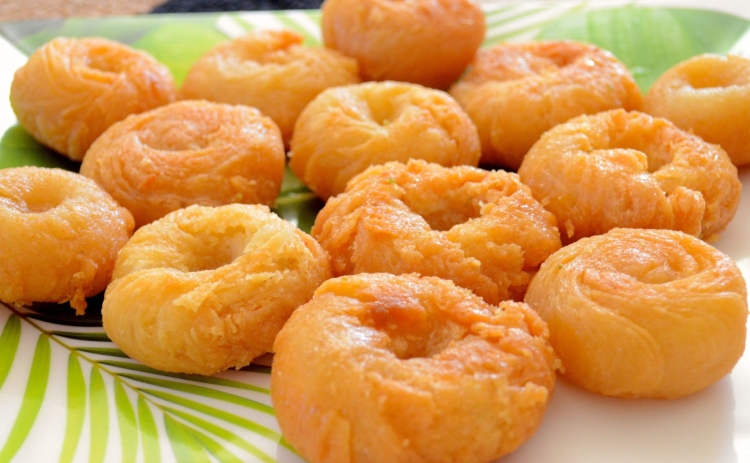
Like Petha, Balu Shahi is also often linked to the Mughal era of the Subcontinent. It has a crunchy, flaky exterior, with a soft interior and looks similar to a doughnut. The color can be orange to light brown, depending upon the temperature of the fryer or how long it has been in the fryer. The ingredients of the balu shahi are also similar to the American doughnut, with all purpose flour, sugar and ghee (instead of butter), but there is a clear difference between the texture and taste of this traditional Indian and Nepali sweet and that of the doughnut. We also make excellent balu shahi according to age-old techniques. We make stiff dough, that is rolled out by hand and the balu shahi are shaped from it. Then the balu shahi are fried in good quality ghee. Once cooked, we dunk them generously in our sugar syrup until the sweetness has soaked through. All of these steps are performed with an experts’ precision in our kitchens, where hundreds of sweetmeats are prepared everyday, before being displayed in our shop windows. While they can be eaten at room temperature as well, our customers like to eat them hot so that the balu shahi crumbles in your hands, and dissolves into a warm pool of sugar in the mouth. This is usually eaten during festivals when our sales automatically increase, being one of the few sweetmeat makers in Canada. We like to make authentic sweetmeats instead of taking the easy way out and using second-rate ingredients. For example, in our khoya barfi we make sure to use fresh khoya rather than using milk powder, which the rest of the vendors use. This is why our customers return again and again to buy sweets and other snacks from us, especially during the Eid days.
New Facebook Page